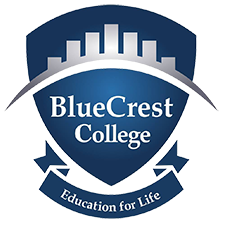Presentations in July and August, 2020
IMPACT OF CUSTOM TAILORING ON READY TO WEAR MARKET IN GHANA ABSTRACT
Presented on August 5, 2020 by Victoria Honu, Faculty Member, School of Fashion and Design, BlueCrest College, Ghana.
The study is to promote customer preference for ready to wear clothing among Ghanaians. It seeks to awaken the public to reduce appetite for imported brand new and used clothing, and develop appetite for ready to wear clothing made from fabrics produced in Ghana, in order to create jobs and help improve the Ghanaian economy and strategies, which are available to introduce a paradigm shift from preference for custom tailoring to ready to wear clothing in Ghana. The study employed a quantitative research design of which the exploratory research design was used. Convenient sampling technique was used to sample twenty (20) top fashion designers from fashionghana.com. A research questionnaire was used to solicit views of respondents. Data was analyzed using descriptive and inferential statistics.
Findings:
- The empirical findings of this study indicate that, females are more interested in fashion than males.
- Customer loyalty amongst fashion designers is not impressive.
- Customer loyalty depreciates with time.
- Females patronize fashion houses more than their male counterparts.
Recommendations
- Stakeholders in fashion industry should encourage upcoming fashion designers in their respective areas of expertise.
- Stakeholders should not only venture into custom tailoring, but in the ready to wear market as well
- Fashion Students should be educated on the various types of markets in Ghana
A Comparative Report on Appraisal of Public Finance Management of Ghana and Malawi
Presented on July 1, 2020 by Michael Safo Ofori, Faculty Member, School of Business and Communication, BlueCrest College, Ghana.
The report compared and assessed the 2018 Public Finance Management (PFM) performance of Ghana and Malawi. A detailed assessment of performance in terms of the seven pillars of the PFM system was done which provided analysis and measurement of results in terms of the 31 performance indicators (PIs) of PFM performance. Assessing all the seven (7) pillars with their indicators and dimensions, Malawi was appraised with having a higher PFM performance than Ghana. In other words, the PFM performance of Ghana was appraised as less integrous and efficient compared with that of Malawi.
Economic Implications of poor PFM performance
- A poor PFM performance of Ghana implicates slowdown in poverty reduction and of economic growth of the economy.
- There will be lack of trust in the PFM which will likely result in tax evasion, tax avoidance and decelerate innovation. This will hamper the development of the country.
- Ghana is likely to receive less donor support.
Recommendation
- Ghana’s PFM needs a reform, however, investigations should be conducted to identify the loopholes and leakages in the PFM for a more reliable reformed PFM system.
A Comparative Assessment of VAT Revenue Forecasting Models.
Presented on July 7, 2020 by Michael Safo Ofori, Faculty Member, School of Business and Communication, BlueCrest College, Ghana.
The study after a thorough scrutiny of applicable econometric methods of VAT Revenue forecasting settled on comparing ARIMA with Intervention Analysis method and Holt linear Trend method to ascertain which model gives a more precise prediction of VAT Revenue in Ghana. ARIMA with Intervention Analysis method outperformed the Holt linear trend model in forecast accuracy and precision. Predicted figures using the ARIMA with intervention model was further compared with GRA VAT revenue target figures given by the Ministry of Finance (MoF) as a proxy for forecast figures of Ghana Revenue Authority (GRA) to adjudge which forecasting approach is more precise, i.e. whether the ARIMA with Intervention Analysis or the in-house model of GRA. It was finally revealed that ARIMA with intervention model outperforms the in-house forecasting model of GRA.
Recommendation
- The effect of exogenous interventions (e.g. discretionary VAT policy change) should be analyzed using the ARIMA with intervention for accurate forecasting of monthly VAT revenue by the Ghana Revenue Authority.
- ARIMA with intervention model should, therefore, be adopted by the Ghana Revenue Authority in forecasting monthly VAT revenues for planning, drawing half year, and full-year government budgets so that the Ministry of Finance budgets expenditure based on precise forecasted revenue.
Elasticity of VAT Revenue to Changes in Real GDP and the Correlation between these Variables: Evidence from Ghana.
Presented on July 1, 2020 by Michael Safo Ofori, Faculty Member, School of Business and Communication, BlueCrest College, Ghana.
The study explored the appropriateness of real Gross Domestic Product as the Valued Added Tax base by testing the correlation between Valued Added Tax (VAT) revenue and real Gross Domestic Product (GDP). It further examined the elasticity of VAT revenue to changes in real GDP of Ghana. It was realized that a one percent increase in real GDP will result in a 3.73373 percent increase in Total VAT revenue on the average (i.e. VAT revenue is fairly elastic to changes in real GDP). Also, a, very high correlation of 0.9365 was realized between real GDP and Total VAT revenue.
Economic Implications
- The appropriateness of using real GDP as a proxy VAT base revealed in the study makes it very easy to compute an accurate effective VAT rate of Ghana quarterly.
- Forecast of quarterly VAT revenue using real GDP as regressor as corroborated by the results of the study can be:
- Implemental in short-term planning and preparation of half-year budgets
- Subservient in reducing the recurring budget deficit of government
- The elasticity of VAT revenue revealed (fairly elastic) implies that economic growth in Ghana will result in higher percentage growth in VAT revenue.
Recommendation
- Real GDP should be considered and used as proxy VAT base for quarterly forecasts of VAT revenue.
- The government of Ghana should implement demand-side policies that will increase aggregate demand, to expedite rapid economic growth.
- The government of Ghana should as well implement supply-side policies that will rapidly increase Real GDP





